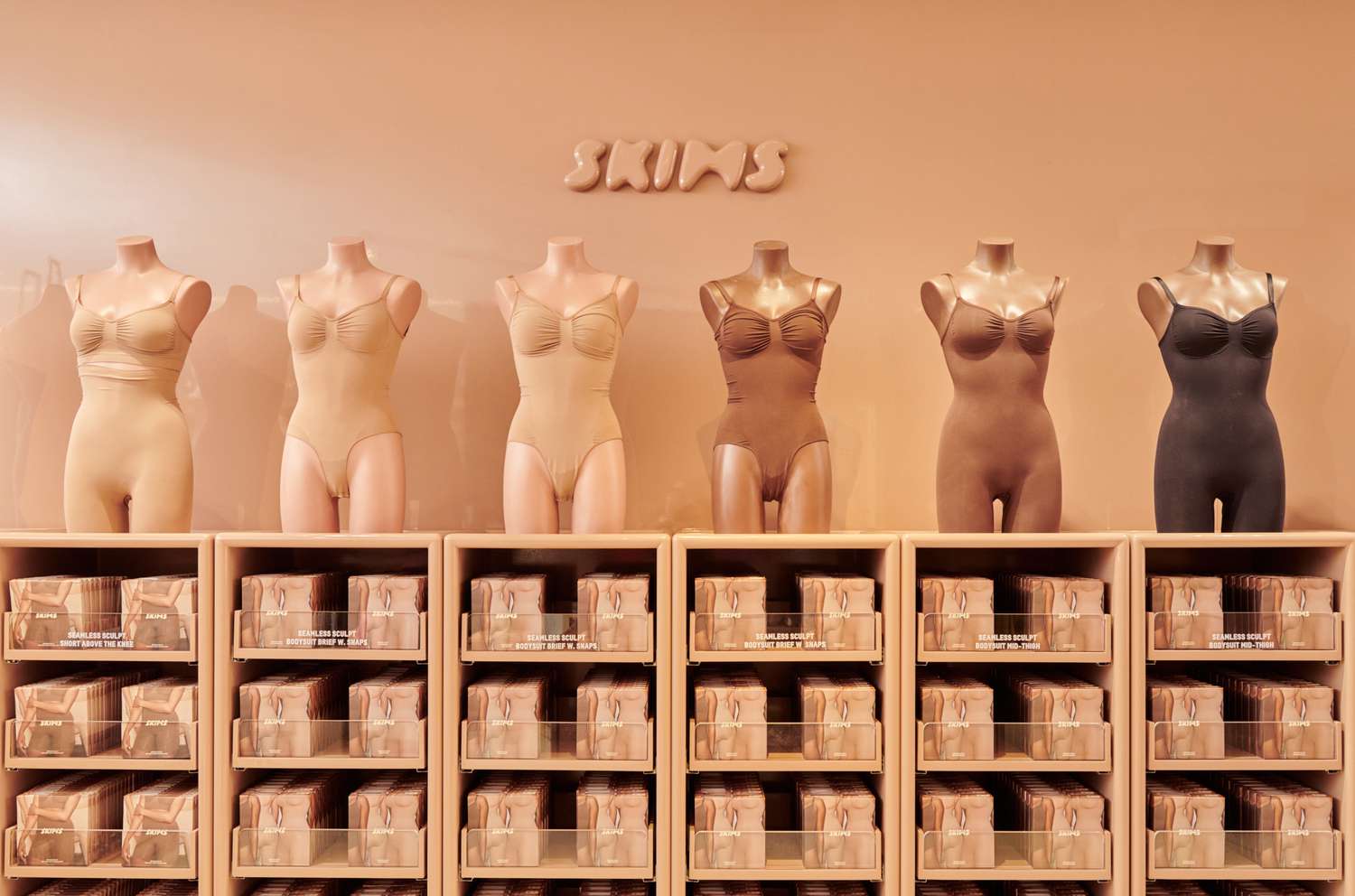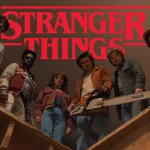Early Wednesday morning, November 26, 2025, passersby in West Hollywood stumbled upon a jarring sight. The flagship SKIMS store on Sunset Boulevard stood marred by fresh black graffiti. Bold scrawls like "Kimmy Bread" and "we need that" sprawled across the exterior walls and columns. This act of vandalism struck at the heart of Kim Kardashian's shapewear powerhouse, just as the brand celebrated its meteoric rise.
Local police arrived swiftly around 5 a.m. PT after a bystander reported the damage. They arrested an unidentified man on felony vandalism charges. Officials pegged the repair cost at over $400, a figure that covers cleaning and minor fixes to the premium facade. By 10 a.m., contractors had scrubbed away the mess, and the store flung open its doors for business as usual.
A Flagship Under Fire: The Raw Edge of Retail Success
SKIMS has built its allure on sleek, inclusive designs and high-end retail experiences. This West Hollywood outpost, one of 18 across the U.S., embodies that vision with its minimalist vibe and curated displays. The sudden defacement felt like a punch to the gut, especially coming so soon after big wins.
Just weeks earlier, SKIMS locked in $225 million in fresh funding. That infusion pushed the brand's valuation to an eye-popping $5 billion. Investors see huge potential in its blend of celebrity pull and everyday appeal. Online sales boom alongside physical stores, and international growth beckons with plans for more brick-and-mortar spots abroad.
Yet this graffiti incident lays bare the gritty side of expansion. Premium brands like SKIMS invest heavily in polished storefronts to draw crowds and foster loyalty. A single overnight tag can shatter that illusion, sparking viral photos and whispers of vulnerability. For a company chasing global dominance, such moments carry weight beyond the surface.

Graffiti defaced the walls of SKIMS’ flagship store just weeks after the brand hit a $5 billion valuation, highlighting the vulnerability of high-profile retail locations.
The Deeper Cut: Reputational Risk and the True Price Tag for Luxury Brands
Vandalism like this seems small at first glance, but it taps into a bigger financial threat called reputational risk. Think of it as the hidden premium customers pay for a brand's shine, trust, and status, often called brand equity in simple terms. When graffiti hits, it chips away at that equity, making shoppers question if the glamour holds up in the real world.
For SKIMS, the direct hit tops $400 in cleanup, but the ripple effects loom larger. Insurance premiums could climb after claims like this, as carriers view the store as a target. Public relations teams might ramp up spending to spin the story positively, while sales could dip if negative buzz lingers online. According to analysis reviewed by Finance Monthly, these indirect costs often multiply the initial damage by five to ten times for high-profile retailers.
Consider the scale: U.S. retailers lost an estimated $45 billion to shrinkage, including vandalism and theft, in 2024 alone. That's a stark number showing how everyday disruptions add up across the industry. As Ladd Muzzy, Global Head of Reputation Risk Management at Aon, puts it, "Quantifying reputation risk, coupled with sound enterprise risk management practices, sets the basis for safeguarding the company’s most valuable assets." His words ring true here, underscoring the emotional toll too. Building a $5 billion dream feels invincible until a spray can reminds everyone of its fragile edges, stirring a mix of frustration and resolve in leaders like Kardashian.
This fresh insight reveals why savvy brands now bake reputational audits into growth plans. They model scenarios like vandalism to forecast PR budgets or even tweak store locations for lower risk. For consumers, it means understanding that your favorite labels pour resources into more than just products, they guard against these quiet erosions of value. In SKIMS' case, swift action minimized the blow, but it serves as a wake-up call. Proactive steps, like enhanced surveillance or community partnerships, could prevent future stings and preserve that hard-won equity.
Echoes of Triumph and Tension: What Comes Next for SKIMS
The vandalism unfolded against a backdrop of relentless momentum. SKIMS' funding round drew praise for its savvy blend of e-commerce and physical retail, positioning it to rival giants like Spanx on a world stage. Yet incidents like this inject tension into the narrative, highlighting the trade-offs of visibility.
No signs yet point to investor jitters. Shares in parent entities hold steady, and the quick arrest projects control. Still, boardrooms might quietly review security protocols now. With international stores on the horizon, each new location amps up exposure to local quirks, from urban grit to cultural clashes.
It's a poignant chapter in Kardashian's entrepreneurial saga. From reality TV to retail titan, her path brims with bold moves and backlash alike. This graffiti, gone by breakfast, symbolizes the unscripted hurdles that test true grit. If anything, it steels the resolve to push forward, turning a blemish into backstory for the next big leap.

Kim Kardashian stuns in a tight white dress by the sea as her Skims brand hits $5 Billion.
Burning Questions on the SKIMS Store Vandalism: What Fans and Followers Want to Know
What Graffiti Messages Appeared on the SKIMS West Hollywood Store?
The vandalism featured crude tags like "Kimmy Bread," a jab possibly mocking Kardashian's wealth, alongside "we need that" and other messy scrawls across the walls. Captured in early morning photos that spread fast on social media, these words hinted at envy or protest against the brand's luxury pricing.
Police documented them as part of the felony case, but the quick cleanup erased the visual proof by opening time. For shoppers, it sparked debates on social platforms about fame's double-edged sword, blending humor with concern over retail safety in trendy spots like Sunset Boulevard. This mix of cheeky and chaotic messaging amplified the story's viral pull.
How Fast Did SKIMS Respond to the Vandalism Incident?
Contractors arrived by mid-morning on November 26, 2025, and erased the graffiti within hours, allowing the store to reopen at its standard 10 a.m. slot without missing a beat. Law enforcement's prompt arrest of the suspect around 5 a.m. helped contain the chaos, showcasing SKIMS' efficient crisis handling.
Behind the scenes, the team likely activated prepped protocols for high-visibility sites, minimizing downtime and media spin. Such speed not only preserved daily revenue but also signaled strength to customers and investors alike, turning a potential PR headache into a testament to operational savvy in the face of urban unpredictability.
Will This Vandalism Affect SKIMS' Recent $5 Billion Valuation?
Directly, no, as the minor damage and rapid fix haven't rattled funding partners or market watchers yet. However, it subtly spotlights broader risks in physical retail expansion, potentially nudging up insurance or security spends that nibble at margins over time. Experts note that repeated incidents could erode brand equity, the intangible value driving that lofty $5 billion tag, by fostering perceptions of vulnerability.
For now, SKIMS' strong momentum from the $225 million raise overshadows this blip, but it prompts a timely review of safeguards as global growth accelerates. Consumers might see it as a humanizing glitch in an otherwise polished empire.














